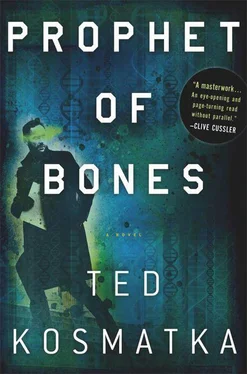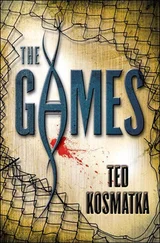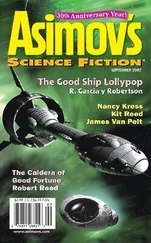“You’ll eat in the lounge. There’s no food or drink in the lab area,” Janus noted. This rule, Paul discovered over the next week, was taken very seriously. This was different than the floor below, where techs sometimes ate at their desks or in their labs, if they didn’t feel like facing the confines of the lunchroom.
That first week on the fourth floor, Paul learned little about actual testing that he didn’t already know. He’d done fixative before; he’d done simple base-pair testing. But the fourth-floor subcultural information he gleaned was priceless. The fourth floor might have been a different world.
Janus showed him bits and pieces over the next several weeks. It wasn’t training so much as a careful rationing of information—the slow, reluctant release of sacred knowledge to one who may or may not be worthy.
It began with the machines. Dark blue obelisks, designed from scratch by Westing engineers. The machines had no names but only generic markings nameplated to one side: FUNCTIONAL GENOMICS. They translated data into the Bioinformatic Markup Language that computers could use for polymorphism analysis. The sample arrays were interpreted by scanners that picked up the fluorescent tags activated in the sample matrix. The ratio of red-to-green fluorescence in the hybridization solution assembled a pattern; special recognition software then coded that pattern into a language the computers could archive.
There were rumors that certain gene freaks had long sequences memorized and could read genes like prose, ticking off amino acids like most people read words in a sentence. The other bone techs didn’t believe these rumors, but Paul did. He understood the power of obsession.
Once, in college, he’d attended a lecture on axolotl salamanders. “A fascinating species from the perspective of intelligent design,” the professor had said. “They are one of the rare species of salamander that don’t have a terrestrial form. Unless, that is, you inject them with thyroxine.” The professor paused to write “thyroxine” on the board.
“They live out their entire lives in the water, growing and reproducing—happily living out their aquatic existence.” He turned back toward the classroom. “But if you inject them with thyroxine, it all changes. Their skulls broaden and flatten. They lose their gills. They go through all the metamorphic changes other amphibians go through.” He paused, letting the implication sink in. It was like all the axolotl salamanders of the world were just waiting for humans to come along with their hypodermic needles full of thyroxine. “The species has genes for the entire biological infrastructure of metamorphosis already in place, passed silently and invisibly from generation to generation.”
This had bothered Paul greatly at the time. It was a riddle, hidden in their genes. A message, some said. And strange biological cults rose up around it. He read about the experiments. He saw the aquariums filled with dozens of salamanders—all living out their placid, watery lives without ever once stepping foot on dry land. Unless you injected them with thyroxine. And that’s all it took, that addition, that single ingredient, and they became another kind of creature entirely.
People could be like this, too.
One morning two months after Paul returned from Flores, he took his sample from the medicine cabinet and drove to work with the lozenge in his jacket.
He nodded to the gate guard as he pulled onto the property. The sample was in a Tylenol bottle in his pocket. The pills rattled as he walked.
As he pushed through the front doors of the lab, he considered all he was risking. His job, his career, his life. He wondered what would happen if they discovered that he’d lied to them. He felt a sudden urge to turn and walk out, to get into his car and drive to the nearest bridge, and throw the sample into the bay.
The elevator doors opened before him. He stared at them for a moment without moving. The doors began to close, and he stuck his arm in to stop them. They opened again. He stepped inside and took the elevator up.
* * *
Paul hid the lozenge in the testing lab. He shoved the Tylenol bottle into one of the forgotten drawers, behind several boxes of latex gloves and a snarl of old VWR tubing used for nitrogen tank assemblages.
The sample would be safe there, at least for now. As safe as it could be.
When Janus arrived, twenty minutes later, Paul was already working on the day’s fixative solution, beginning the prep for all the samples that needed to be tested.
Cohanim: A Y-chromosome Analysis Using SNP and STR Markers
DNA samples extracted from the mucosal swabs of 645 men were referred for Y-chromosome analysis. The test subjects self-reported as being of either Sephardic, Kurdish, or Ashkenazi Jewish descent, and all were typed for Y-chromosome DNA sequence. The Y-chromosome profiles of each group were compared to each other, as well as to a fourth, existing control group of non-Semitic men of Middle Eastern descent. Analysis of genetic distance indicates close proximity between the Sephardic and Kurdish groups, with the Ashkenazim and non-Semitic Middle Eastern Y chromosomes demonstrating as distinct isolates. In addition to these divisions, deeper analysis suggests intrapopulation substructure within the Ashkenazim, revealed as an unusual haplogroup distribution among the subset of the Jewish priesthood (the Cohanim). Identity within the Cohanim is highly prescriptive, being passed only from father to son by rigid patrilineal descent. Further testing elucidated a phylogenetic division between Cohanim and non-Cohanim Semitic males. The demographic cohesion of the 6SNP-6STR genetic motif infers hereditary continuity between present-day designates of the Cohen surname and ancient biblical Hebrews. High-resolution Y-chromosome analysis establishes that this distinct paternal lineage among the Cohanim is in accordance with expansion from a single male progenitor and thus conforms to long-established rabbinic assertions of paternal descent from the biblical Aaron, brother of Moses. From these data, it can be inferred that Moses likely belonged to Y-chromosome haplogroup J1.
It was nearly seven and the sky was still brightening toward full morning. Paul drove with the windows down.
The air smelled clean and fresh. Like the ocean before a storm.
As he pulled into the parking lot, he took note of the number of vehicles in the lot. He opened his little green notebook and wrote down the time and the number of cars: “7:49—3 cars.”
He climbed out and walked toward the building. He’d beaten the front-desk guard in and so had to use his card to swipe through the entrance doors.
Though the workforce of Westing was a cross section of the human species, most of the researchers were Asian; but then, Paul thought, most humans were Asian, so this was perhaps not altogether unexpected. The other researchers came from all over the world.
Paul sat in the lounge during his breaks, listening to conversations.
It was like a joke. Put an American, a Filipino, a Kenyan, and a Korean in a room. What will they talk about?
Women.
There were also run-of-the-mill complaints.
“That’s what I keep telling him, but he doesn’t listen.”
“Why don’t you go home and cry to your old lady?”
“I do, but she doesn’t listen, either.”
“John doesn’t listen, your wife doesn’t listen, Hongbin doesn’t listen. Who else?”
“Tom doesn’t listen, either.”
“Not even Tom?”
“No.”
“All these people don’t listen, what’s that tell you?”
“Tells me I’m the only smart one.”
Paul did his best to learn the procedures. It was more than monotony and memorization. There were flashes of insight. Conversations with the other techs. Laboratory minutiae.
Читать дальше












